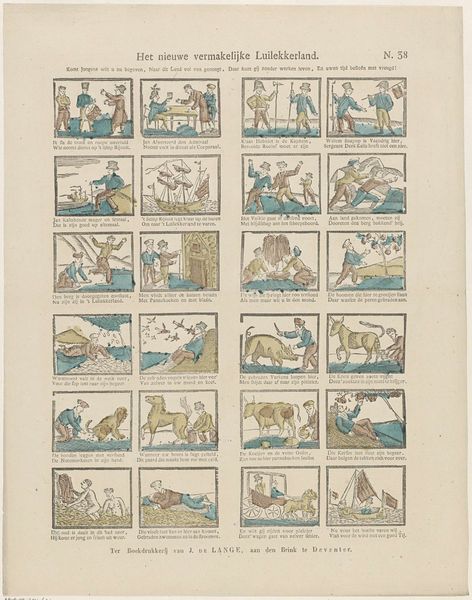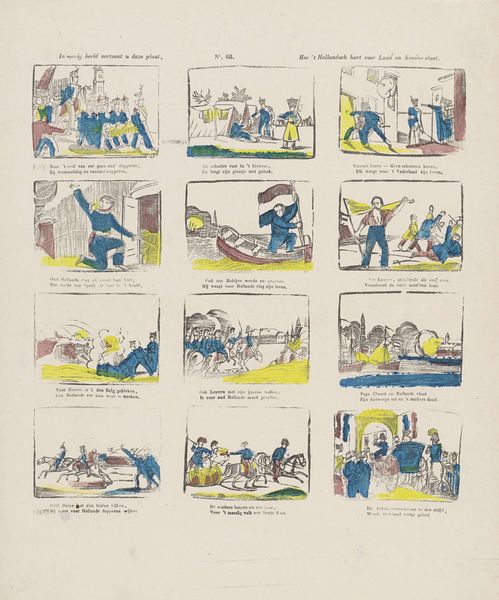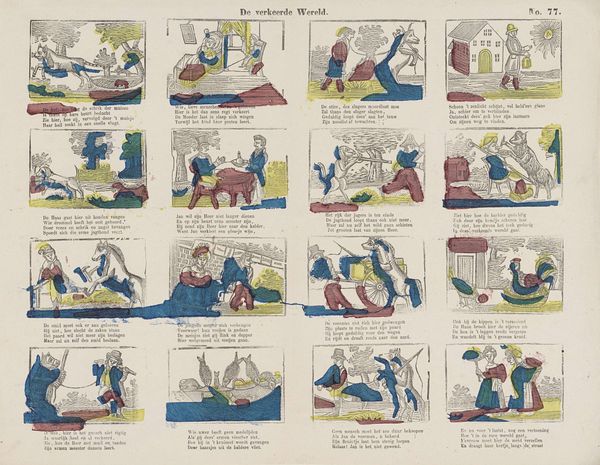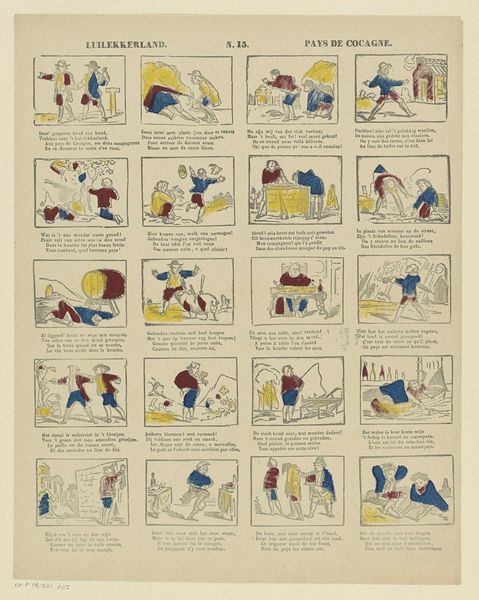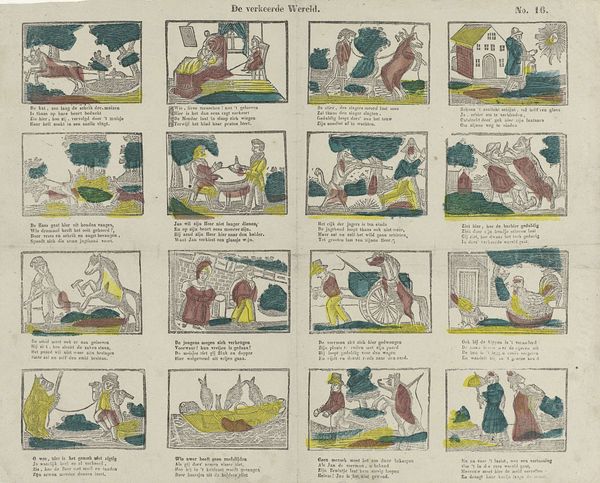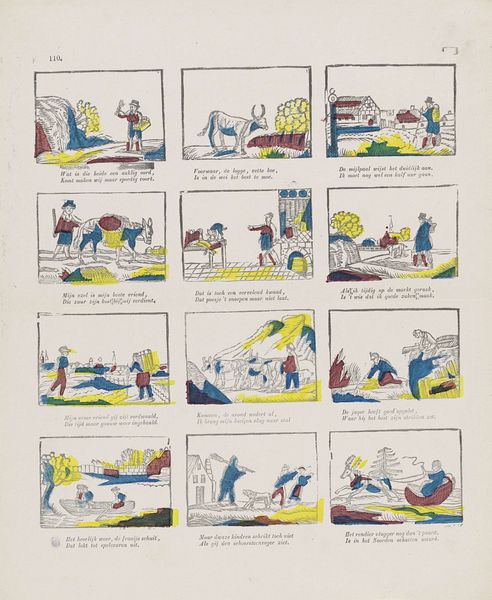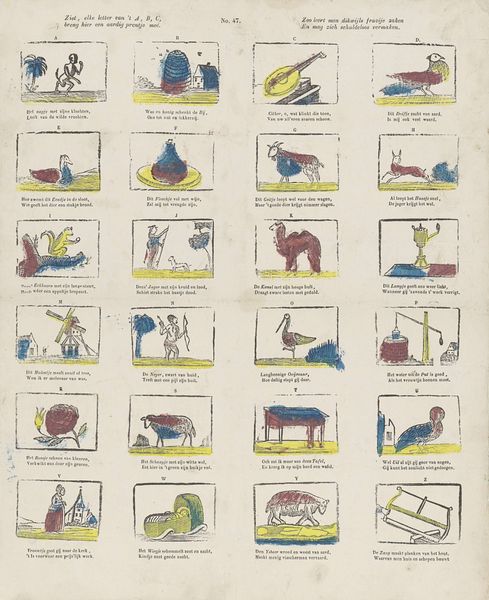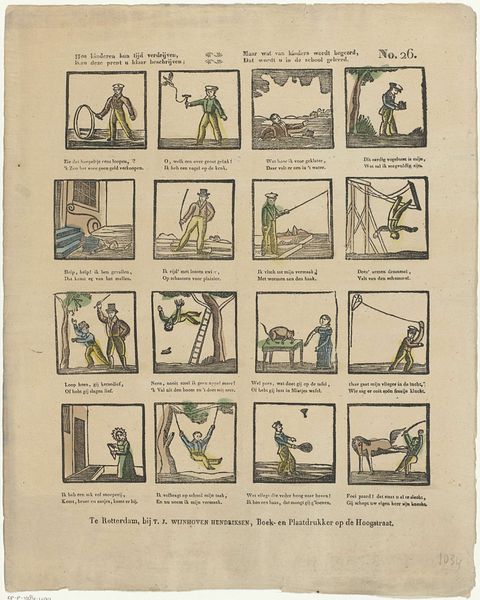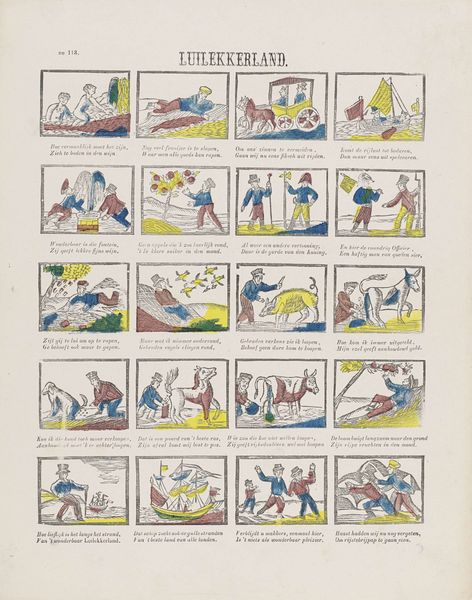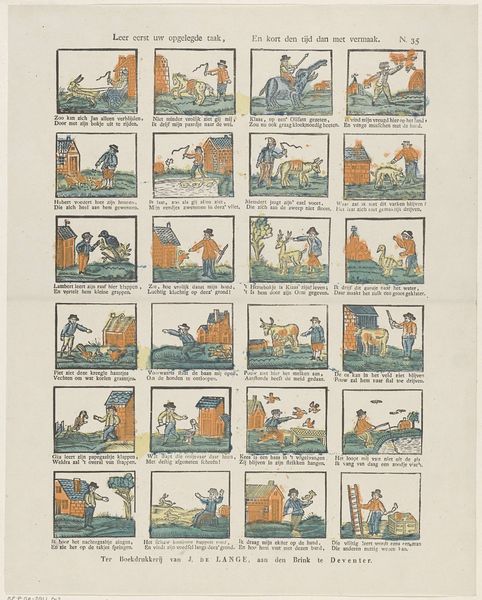
Wilt in uw jongen tijd, toch lustig, ijvrig leeren, / Want later lieve jeugd komt dit zoo schoon te pas. / Benuttig uwen tijd, te laat zoudt ge u beklagen, / Want o de schoone tijd der jeugd vervliegt zoo ras 1848 - 1881
0:00
0:00
lutkiecranenburg
Rijksmuseum
print, engraving
#
narrative-art
# print
#
folk-art
#
genre-painting
#
engraving
Dimensions: height 402 mm, width 307 mm
Copyright: Rijks Museum: Open Domain
Curator: This fascinating print, attributed to Lutkie & Cranenburg and held here at the Rijksmuseum, dates from sometime between 1848 and 1881. The lengthy title translates roughly to “Wilt in your young days, yet gladly, zealously learn." It’s an engraving filled with little narrative vignettes. What strikes you first about it? Editor: Immediately, it’s the compartmentalization, almost like a series of tarot cards, each telling a small story within the larger frame. The simple coloring and line work give it a naïve, folk-art feel, but there’s an undercurrent of...warning, almost? Curator: Interesting observation. We might consider this within the broader context of educational prints popular during that era. Each vignette is indeed a miniature scene, often with a moral lesson or proverb, aiming to instruct the youth, likely a commentary on labour and values. We might explore how print culture shaped the dissemination of ideology within expanding bourgeois communities. Editor: Precisely. Thinking intersectionally, we must acknowledge the work is explicitly engaging ideas of power—who benefits, and who is exploited within systems? Consider how themes of industriousness or the "proper" use of time serve those who controlled capital during this period, and what lessons they want to engrave in the young generation. It prompts the critical question: Education for whom, and for what purpose? Curator: That lens allows us to investigate further into these seemingly benign images, connecting the folk-art charm to its underlying societal role. Do these simplistic depictions reinforce the status quo? Editor: Absolutely, it becomes a reflection on structures—familial, educational, economic—and it gives those with a strong investment in keeping those structures intact another opportunity to indoctrinate society’s younger members. By prompting us to examine these visuals through diverse theoretical viewpoints, it highlights power, knowledge, and social construction. Curator: Exactly! So, what initially seemed like an innocent children's print becomes a microcosm of 19th-century Dutch society. Editor: In retrospect, examining this folk piece, which seems innocuous at first glance, has illuminated how the values and educational paradigms imposed on individuals may impact generations and the evolution of societal values.
Comments
No comments
Be the first to comment and join the conversation on the ultimate creative platform.
